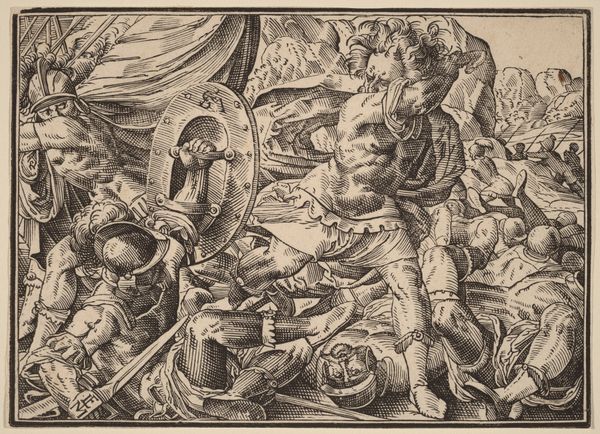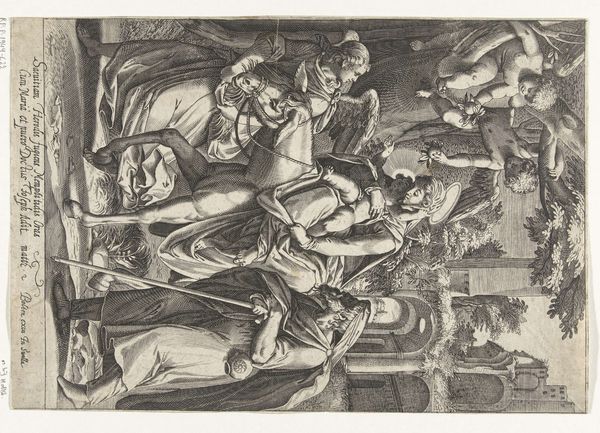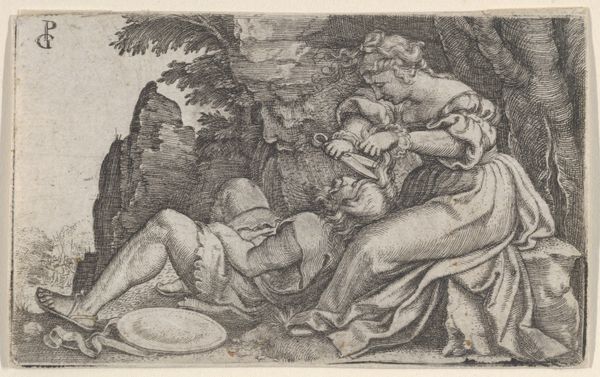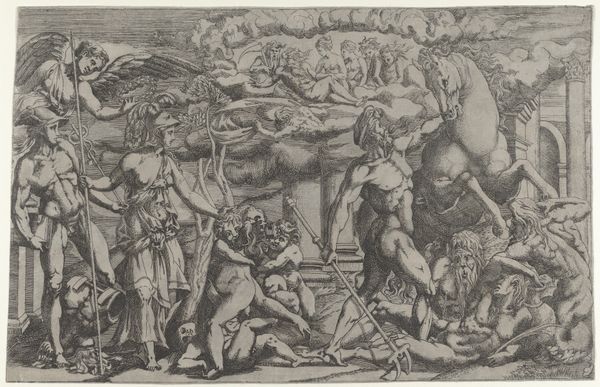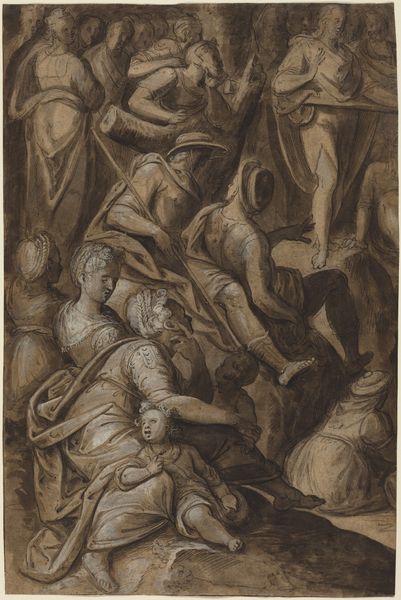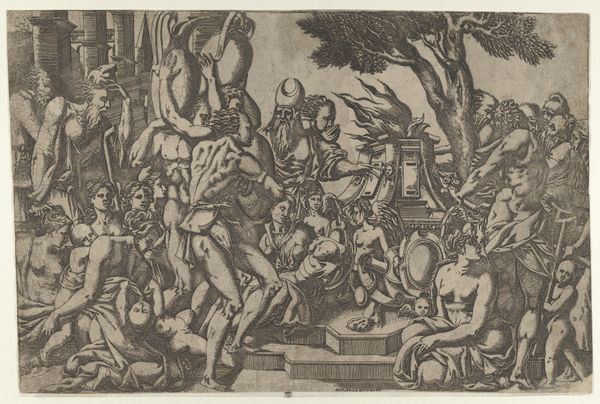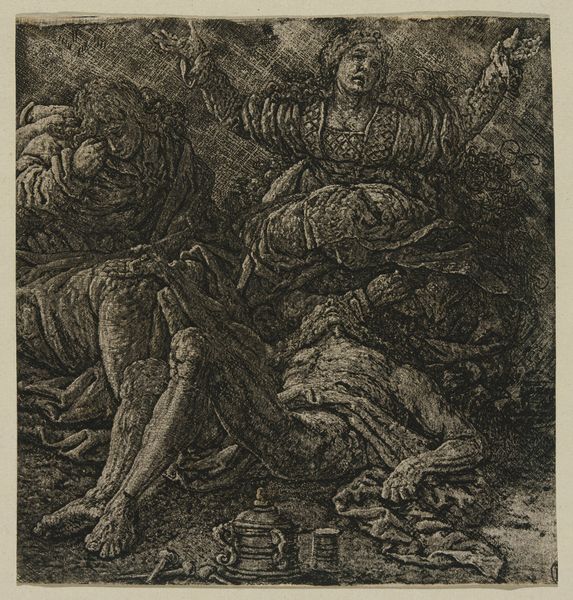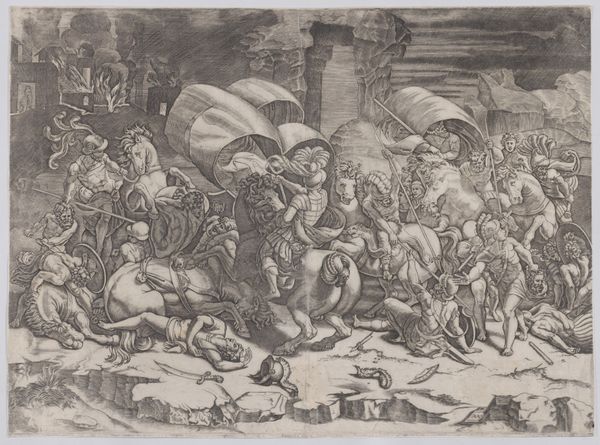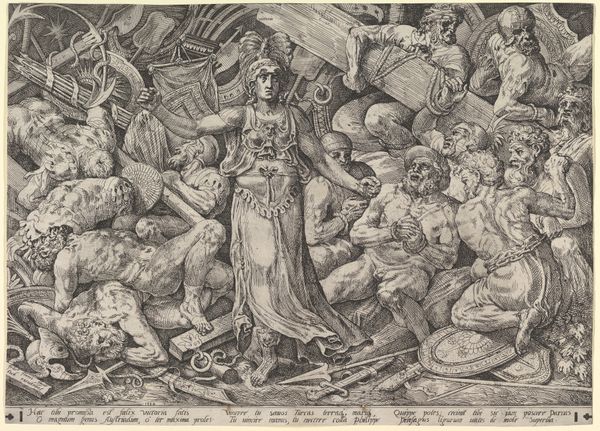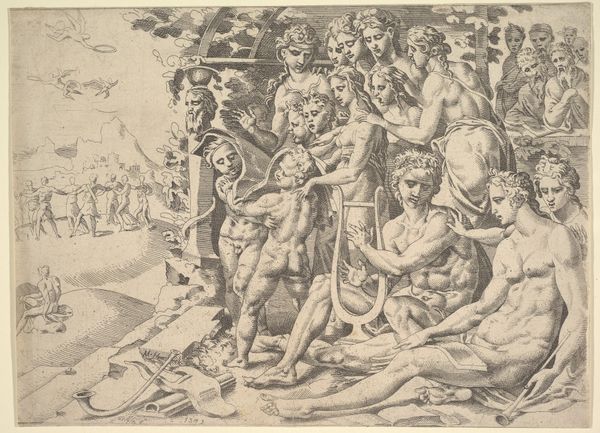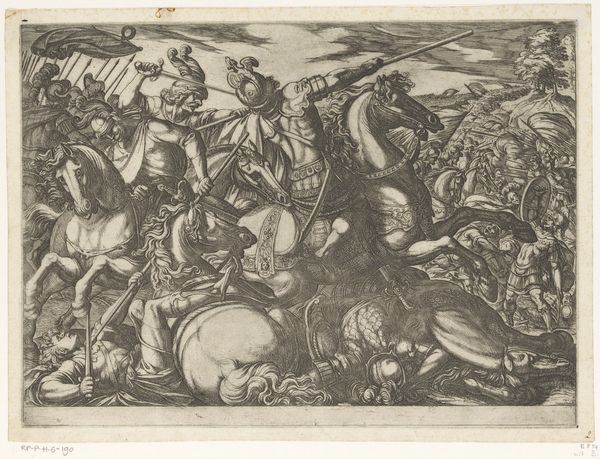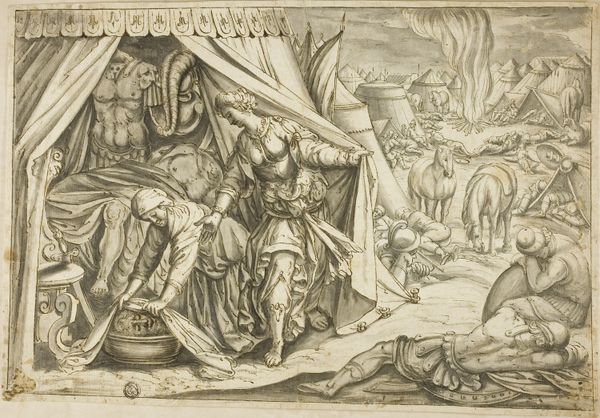
drawing, print, engraving
#
drawing
# print
#
figuration
#
pencil drawing
#
history-painting
#
italian-renaissance
#
engraving
Dimensions: Sheet (Trimmed): 13 15/16 × 17 11/16 in. (35.4 × 45 cm)
Copyright: Public Domain
Curator: Here we have Giovanni Battista Scultori's print, "David about to decapitate Goliath," created around 1540. Editor: The first thing that strikes me is the overwhelming darkness, a heaviness emphasized by the dense hatching of the engraving. It feels…brutal. Curator: It’s a potent image, laden with political and religious significance. Consider David, a symbol of youthful strength and divine favor, poised over the vanquished Goliath, embodying tyranny. Think of the implications in the context of 16th-century power struggles. Editor: Right, it’s not just a depiction of the biblical story. I’m particularly drawn to the level of detail in the armour, the precise rendering of the metal reflecting the light. What would it have taken to create such precise imagery? Curator: That precision served a didactic purpose, reflecting the Renaissance emphasis on learning and conveying complex narratives to a wide audience, not just an elite one. Note also how Goliath’s body is rendered—that musculature. The work echoes classical sculpture while also acting as potent political statement. Editor: I’m thinking about the role of prints at this time. Their relatively low cost and portability meant they could circulate quickly, influencing artistic style and potentially even disseminating ideologies more widely than a painting hanging in a palace could. The act of mass producing this kind of image democratizes the message, making it more available for engagement and discussion. Curator: Absolutely. And in a world grappling with religious upheaval and shifting power dynamics, the image of David could galvanize those seeking to challenge the Goliaths of their own time. Editor: Thinking about it that way changes the whole picture. Thanks. It’s fascinating how considering material processes can expose broader societal forces. Curator: Indeed. By analyzing historical narratives through the lens of their dissemination, we see art not as isolated masterpieces, but as tools within ideological battlegrounds.
Comments
No comments
Be the first to comment and join the conversation on the ultimate creative platform.
